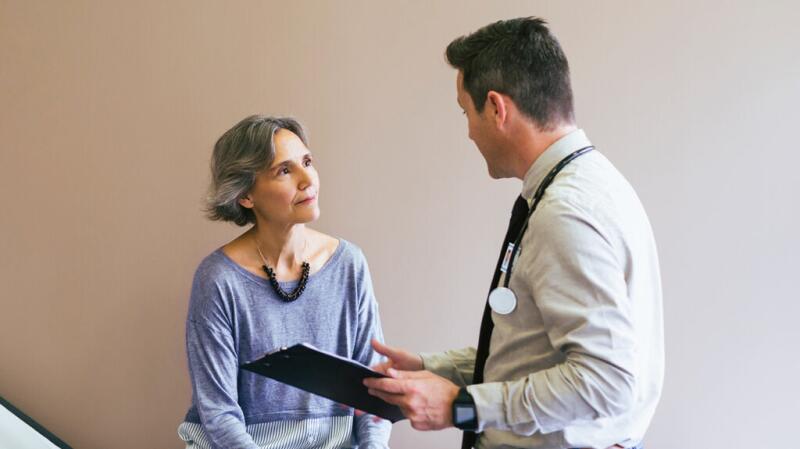Most people who undergo a breast biopsy do not have cancer.
Read on to learn more about breast biopsies, including what to expect, what they can show, and how often they indicate cancer.
Why might you need a breast biopsy?

Breast biopsies can rule out the possibility of breast cancer.
You may have undergone other screening tests for breast cancer, such as a mammogram or a physical exam. However, a biopsy is the best way to tell whether a growth in the breast is cancerous or not.
Learn more about breast cancer screening here.
Types of breast biopsy
There are different types of breast biopsies that doctors may recommend depending on several factors, such as the number of lumps you have, how big they are, and their location in the breast. Your doctor will also ask you about your personal preferences relating to this procedure.
Types of breast biopsies
- Core needle biopsy: This is often the most common type of biopsy to check for breast cancer. Doctors tend to opt for this type if they have felt or seen changes during a scan or physical exam. They will use a hollow needle to remove tissue from the breast.
- Fine needle aspiration: A doctor will use a thin, hollow needle to draw out liquid or tissue from a specific place in the breast.
- Surgical biopsy: In rarer cases, a surgeon will need to remove the whole lump or a bigger part of it for testing. They may also remove some surrounding tissue. This is an open surgery, and you will receive an anesthetic for the procedure.
- Lymph node biopsy: A doctor may choose to check the lymph nodes for cancer while they are checking breast tissue. Cancer may have spread there, and your doctor may be able to check whether or not this is the case in the same procedure.
Preparing for a breast biopsy
The following tips can help you prepare for a breast biopsy:
- Wear comfortable clothing that is not tight.
- Be aware that you may need to take off your clothing and jewelry before the procedure begins. A doctor will give you a gown to wear.
- Make sure you inform your doctor if you take any medications or supplements. Tell them about allergies you may have as well.
- If you have an underlying medical condition or have been ill recently, inform your doctor.
- Make sure you have someone to drive you home after the procedure. This is particularly important if the procedure requires sedation.
You may need to stop taking supplements, aspirin, or blood thinners for 3–5 days before the biopsy. Your doctor will inform you as to exactly what you need to do before the appointment.
What to expect during a breast biopsy
The exact procedure you can expect during your breast biopsy will vary depending on what type of biopsy you are having.
Fine needle aspiration or core needle biopsy
During a fine needle aspiration or core needle biopsy, a doctor will remove a sample of fluid or tissue using a needle. They will take the following steps:
- They will ask you to lie on your side or sit on a table.
- They will then prepare the site by cleaning it.
- They will inject the area with an anesthetic. There may be some pain when the needle enters your skin, but the purpose of an anesthetic is to prevent pain sensations while the procedure is taking place.
- They will then insert the needle and remove the sample. Some people report feeling pressure while this is happening, but it should not be painful.
- They will apply pressure to the place the needle took the sample. This helps stop the bleeding.
- They will then put a bandage over the site.
Surgical biopsy
During a surgical biopsy, a surgeon will remove tissue through an incision they make in the breast. This can be useful if a needle would not be able to reach the tissue it needs to take. They will take the following steps:
- They will ask you to lie down on a table. They may put an IV line into a vein in your hand or arm.
- You might receive a sedative, which can help you relax. They may choose to give you a local or a general anesthetic. This can ensure that you feel no pain during the procedure. Receiving a local anesthetic means that they inject the site they will take the sample from, and receiving a general anesthetic means that you will be unconscious while they take the sample.
- A surgeon will then make a small incision on your breast and remove some or all of the lump. They sometimes choose to take some of the surrounding tissue at the same time.
- They will then close the incision in the skin, which they can do with stitches or adhesive strips.
Is it painful?
During a breast biopsy, you will receive either a local or a general anesthetic. This means that you should not feel any pain during the procedure. However, receiving a local anesthetic does not mean that you do not feel anything at all.
Most people do not find the procedure painful. However, some may be more sensitive to pain depending on the density of their breast tissue or the location of the sample. Some people also report a feeling of pressure.
If you can, you should always let your doctor know if you feel any pain or discomfort during the procedure.
Aftercare and recovery
Aftercare may depend on your situation and the type of breast biopsy you underwent. Your doctor will outline your aftercare instructions clearly and write them down.
It is normal to experience some bruising after the procedure. Your doctor may recommend over-the-counter pain relievers for swelling and bruising. Cold packs may also help reduce swelling.
You should not exercise strenuously for 24 hours after a breast biopsy.
If the surgeon leaves a biopsy marker in your breast during the procedure, it will not be visible or cause you any pain. It is also safe to have an MRI scan with the marker in place.
When to contact a doctor after a breast biopsy
You should call your doctor if you notice any of the following symptoms after a breast biopsy:
- excessive swelling
- bleeding
- fluids leaking
- flushed skin
- heat at the site of the biopsy
How often do the results show cancer?
Your doctor will share your results with you at a later appointment. This may vary depending on your plan and facility.
Although breast biopsies can be stressful, 80% of people in the United States who undergo this procedure do not find that they have breast cancer.
However, if the biopsy does show cancer, your doctor will immediately start you on an appropriate treatment plan. Early diagnosis and treatment of breast cancer can improve your outlook with the condition.
It is possible for a breast biopsy to wrongly indicate that a person does not have cancer, but this is extremely rare. It could mean that whoever interpreted the sample under a microscope made a mistake in their observation. It could also mean that the surgeon took the wrong piece of tissue for sampling, but this is very unlikely. Surgeons use markers, scans, and other methods to ensure that this does not happen.
Learn about the treatment of early breast cancer here.
Summary
A breast biopsy is a procedure that healthcare professionals can use to confirm whether you have breast cancer or not. They take a tissue or fluid sample with a needle or through a surgical incision.
Most of the time, people who undergo this procedure find that they do not have breast cancer. However, if the results of the breast biopsy do indicate cancer, your doctor can start you on an appropriate treatment plan immediately.




